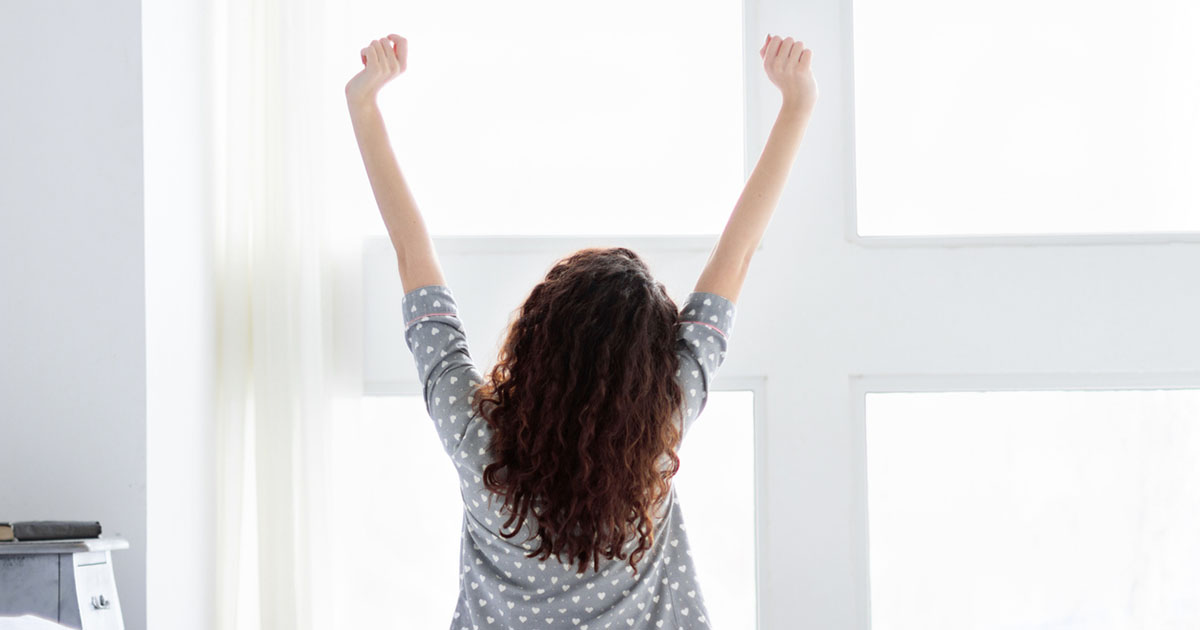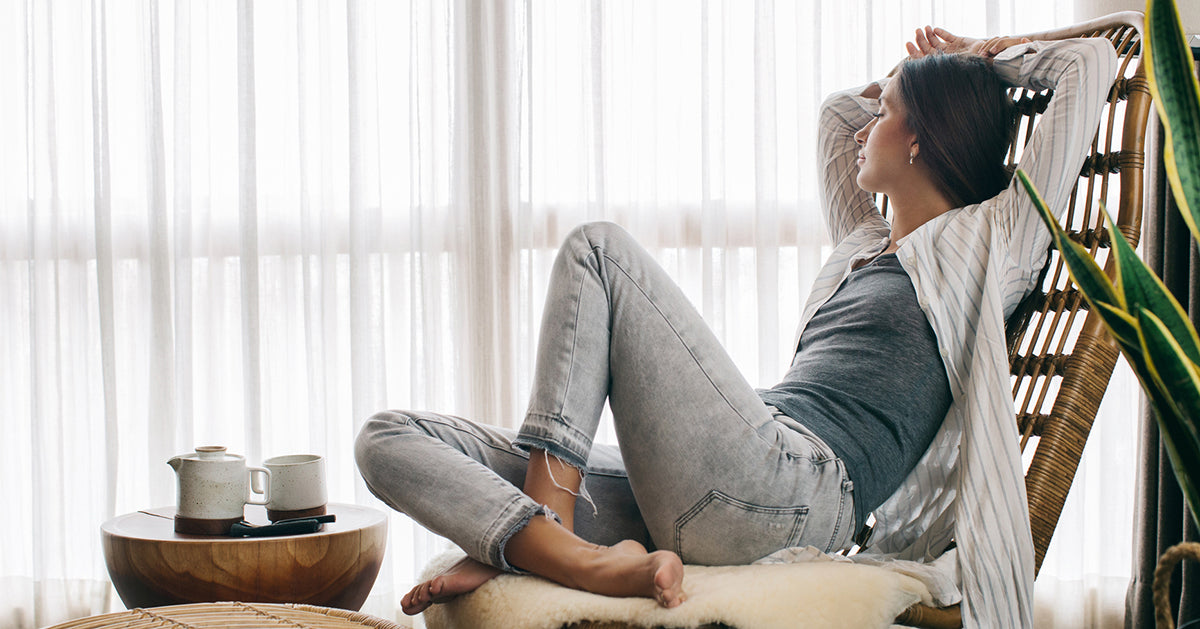10 surprising sleep tricks

MegaFood | Sept. 2020
Good sleep is the cornerstone of good health, yet getting those forty winks each night is a challenge for many. The National Institutes of Health estimates that sleep-related problems affect 50 to 70 million Americans of all ages and socioeconomic classesFootnote 1, and the Centers for Disease Control and Prevention reports that 33% of adults don’t get adequate sleep.Footnote 2
Translation: A lot of people need a lot more ZZZs.
It’s easy enough to find traditional sleep tips, like taking a warm bath before bed and sleeping in a cool room. We’re betting you’ve heard them all, and so we’re supplementing those traditional tips with some uncommon tricks - a few might surprise you, and we hope you’ll give them a try!
5 Before-Bed Tricks
1. Submerge your face in cold water for 30 seconds. Yes, this will wake you up for a moment but it won’t take long for the experience to trigger the Mammalian Diving ResponseFootnote 3, an involuntary phenomenon that calms your nervous system by lowering your blood pressure and heart rate, putting you into hibernation (read: sleep) mode.
2. Blow bubbles (yes, bubbles). In a New York Post articleFootnote 4, Dr. Rachel Marie E. Salas, a professor of neurology at Johns Hopkins University School of Medicine, encourages folks to blow bubbles before bed, using the kid-friendly plastic bottle variety with a mini wand inside - doing so acts as a (fun!) deep-breathing exercise, calms your mind and can help you fall asleep faster.
3. Take this... Magnesium is a mineral that helps support the system responsible for getting you calm and relaxed; our Relax + Calm† Magnesium Soft Chews are a delicious way to help ease muscle tension & promote a sense of calm & relaxation.*
4. ...Or take that. If melatonin isn’t your thing, we’ve combined four time-tested herbs including ashwagandha, an adaptogen to reduce stress and tension, in our doctor-formulated Herbal Sleep supplement.
5. Do the Leg Up yoga pose. To perform this calming inversion pose, lie on your back on your yoga mat, move your arms out, turn your palms up and lift your legs until the bottom of your feet face the ceiling and hold for at least five minutes.
5 In-Bed Tricks
1. Warm up those tootsies. Warming up cold feet causes blood vessels to dilate, called vasodilation, which may be a bedtime trigger for the brain. Research has shown the more vasodilation in the feet, the faster someone falls asleepFootnote 5 - so put on some socks (or cashmere slippers), put a hot water bottle near your feet or put an extra blanket at the foot of the bed.
2. Get “back” to sleep. Back sleeping is generally noted as a healthy position for most people - and it’s also the most conducive sleep position - yet Nature and Science of Sleep reports that only 37.5% of adults sleep on their backFootnote 6.
3. Know what you knee-d. If you’re not a natural back sleeper, you might need an assist to keep you in the right position. Cue the pillow. Just place a pillow under your knees to relieve any pressure or pain in your lower back (a common complaint of back sleepers). Only when you really relax and feel comfortable can you fall asleep.
4. Remember: the nose knows. A breathing method known as Alternate Nostril Breathing teaches that breathing through the left nostril can be calming, a theory confirmed in a 2017 studyFootnote 7. To relax at bedtime, close your right nostril with your right thumb and slowly inhale through your left nostril, then slowly exhale through your right nostril, and repeat for 3 to 5 minutes.
5. “Roll” with it! Many of us naturally roll our eyes when faced with, say, a sarcastic comment, but did you know eye-rolling mimics the eye movements experienced while sleeping and may help produce melatonin? It could be true! (Don’t roll your eyes - not now, anyway). Try gently rolling your eyes three times when you can’t sleep to help you relax and catch those forty winks.
We hope these tips are a real yawn - as in, they help put you right to sleep!
1 Strine & Chapman (2005) Associations of frequent sleep insufficiency with health-related quality of life and health behaviors https://pubmed.ncbi.nlm.nih.gov/15680291/ 2 CDC (2016) 1 in 3 adults don’t get enough sleep https://www.cdc.gov/media/releases/2016/p0215-enough-sleep.html 3Panneton & Gan (2020) The Mammalian Diving Response: Inroads to Its Neural Control https://www.frontiersin.org/articles/10.3389/fnins.2020.00524/full 4 Domonell; Men’s Health (2015) Can’t fall asleep? Try blowing bubbles — seriously https://nypost.com/2015/08/10/cant-fall-asleep-try-blowing-bubbles-seriously/ 5Ko & Lee (2018) Effects of feet warming using bed socks on sleep quality and thermoregulatory responses in a cool environment https://www.ncbi.nlm.nih.gov/pmc/articles/PMC5921564/ 6 Skarpsno, Mork, Nilsen & Holtermann (2017) Sleep positions and nocturnal body movements based on free-living accelerometer recordings: association with demographics, lifestyle, and insomnia symptoms https://www.ncbi.nlm.nih.gov/pmc/articles/PMC5677378/ 7 Kamath, Urval & Shenov (2017) Effect of Alternate Nostril Breathing Exercise on Experimentally Induced Anxiety in Healthy Volunteers Using the Simulated Public Speaking Model: A Randomized Controlled Pilot Study https://www.ncbi.nlm.nih.gov/pmc/articles/PMC5660749/



Leave a comment
This site is protected by hCaptcha and the hCaptcha Privacy Policy and Terms of Service apply.